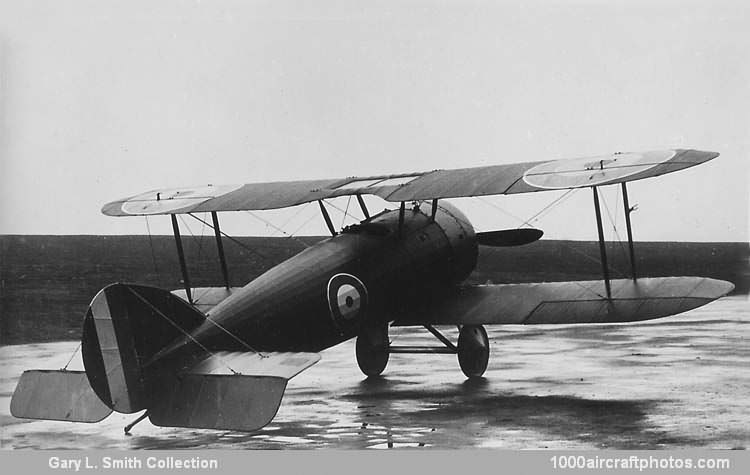Redesignated E.S.1 (Experimental Scout) and powered by a 100 hp Gnome Monosoupape rotary, the aircraft was flown again in August 1915. Assigned the serial 7509 it was sent to the Central Flying School at Upavon for testing. An equi-span single-bay unstaggered biplane, the E.S.1 had enlarged tail surfaces and strengthened landing gear. It was aerodynamically clean and possessed an excellent performance, but view for the pilot was extremely poor. Three further examples were built, s/n 7756 to 7758, these were also unarmed.
An improved version was then developed, powered by the 110 hp Clerget nine-cylinder rotary engine. This was assigned the official designation E.S.1 Mk.II, although it was known to Vickers as the E.S.2. (Hence the somewhat strange header of the page, see point 3 and 4 in our Designating System.) Two E.S.1 Mk.IIs were built (s/n 7759, 7760), one of these being fitted with a 0.303 in (7.7 mm) Vickers machine gun with Vickers-Challenger synchronizing gear and sent to France in the summer of 1916 for operational trials with No. 11 Squadron, RFC.
The other E.S.1 Mk.II was eventually similarly armed and tested with a 110 hp Le Rhône rotary, while the original E.S.1, too, was fitted with the machine gun and synchronization gear, and was at one time included on the strength of RFC No. 50 Home Defence Squadron. The official evaluation of the E.S.1 in both versions pronounced the aircraft tiring to fly and difficult to land, and no production was ordered. The E.S.1 did, however, serve as a basis for the design of the later F.B.19. The following data relate to the Clerget-engined E.S.1 Mk II."
Span: 24 ft 4.5 in (7.43 m)
Length: 20 ft 3 in (6.17 m)
Height: 7 ft 8 in (2.34 m)
Wing area: 215 sq.ft (19.97 sq.m)
Weight empty: 981 lb (445 kg)
Loaded weight: 1,502 lb (681 kg)
Max speed: 112 mph (180 kmh) at sea level
Climb: to 8,000 ft (2,440 m) 12 min 39 sec
Endurance: 2 hrs
